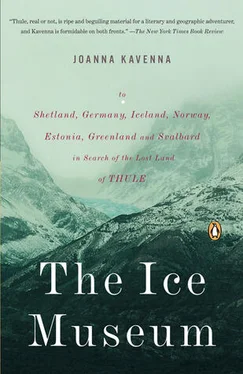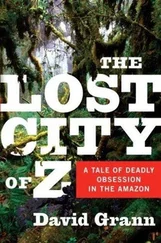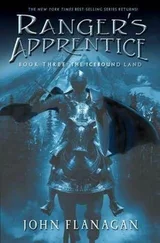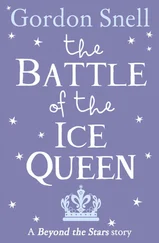I slid away from the city centre, over fields and along summer footpaths transformed into a ridge of packed-up snow. The frozen ground stretched up a hill flanked by ice-trees. A dim sun was drifting towards the horizon. Occasionally I caught a glimpse of the pasty waters of Oslofjord, glinting in the afternoon semi-light. Nansen’s beached boat was an hour’s walk across the Bygdøy Peninsula, a spit of land curving away from the city. It would have been a gentle stroll in any other weather conditions, but I was wishing I had packed crampons, instead of shabby notebooks that weighed me down. I passed slowly up a hill, breathing in cold air, shuddering into my coat. I walked through streets of perfect wooden houses, with elegant old Norwegians sliding past on their daily circuit; glad of the cold, they skied slowly through the tranquil afternoon. The buildings on Bygdøy were the homes of the affluent and influential: ambassadorial residences with security gates, flying Norwegian flags like recent settlers.
Nansen’s boat was kept under a roof—a tight-fitting canopy, built above the masts. When I arrived I saw what looked like an enormous icy tent standing in a car park, with the pallid fjord on the other side. Across the fjord container ships were waiting at Oslo’s city harbour, while passenger ferries turned slowly to head for Sweden and the Baltic. The Kontiki Museum, a memorial to the resilience of Thor Heyerdahl, stood next to the icy tent. A few families were walking through the doors.
The white compound housed the low-slung hull of Nansen’s boat. Pushing inside, feeling the coldness of the room, I saw a boat with its sides swelling outwards, a creation of curved wooden planks, immaculately painted in red and black. I stared up at the relic, a boat cleared of barnacles and debris, its neatness emphasizing its obsolescence, dried out, never to be launched again. And I thought how Nansen had planned the ship, how he had stalked across its polished boards, galvanizing his crew against the long polar night. He named her Fram —meaning ‘forward’ in Norwegian. It was a challenge—forward into the onslaught of the elements, beyond the land of Thule to somewhere still more distant and strange. Fram was fitted for Arctic exploration alone. The tub-shaped hull, the hulking thickness of the sides, had been lovingly crafted by Colin Archer, a Norwegian-Scot, on specific instructions from Nansen. It was the physical weight of the ice that had obstructed previous attempts to reach the Pole, Nansen thought. ‘Everywhere the ice has proved an impenetrable barrier, and has stayed the progress of invaders on the threshold of the unknown regions,’ Nansen told his audience at the Christiania Geographical Society in 1890. At the time, he had just returned from making the first crossing of the Greenland ice cap, and he was generally regarded as something of an expert on jagged vistas of ice. Despite the overwhelming evidence that it was impossible to reach the Pole by ship, Nansen thought it was worth continuing to try.
Nansen saw the history of Arctic exploration as an epic quest for knowledge. He laced his own exploration with a sense of myth and mystery. ‘Unseen and untrodden under their spotless mantle of ice the rigid polar regions slept the profound sleep of death from the earliest dawn of time,’ he wrote. ‘Wrapped in his white shroud, the mighty giant stretched his clammy ice-limbs abroad, and dreamed his age-long dreams. Ages passed—deep was the silence. Then, in the dawn of history, far away in the south, the awakening spirit of man reared its head on high and gazed over the earth. To the south it encountered warmth, to the north, cold; and behind the boundaries of the unknown, it placed in imagination the twin kingdoms of consuming heat and of deadly cold.’
He wrote in unapologetically baroque prose, spilling out references, everything wrapped in poetic phrases. ‘When our thoughts go back through the ages in a waking dream,’ wrote Nansen, ‘an endless procession passes before us, like a single mighty epic of the human mind’s power of devotion to an idea, right or wrong—a procession of struggling, frost-covered figures in heavy clothes, some erect and powerful, others weak and bent so they can scarcely drag themselves along before the sledges, many of them emaciated and dying of hunger, cold and scurvy; but all looking out before them towards the unknown, beyond the sunset, where the goal of their struggle is to be found.’ Ignorant of what they might find, they cast illusions onto the silent ice, patterning the unknown regions with dark fantasies, expectations, dreams of grail treasure.
With this lacy patterning of myth, Nansen had sailed north.
Walking up to the deck I passed through an exhibition of stuffed birds and animals, set against an Arctic stage set—a painted backdrop of craggy Arctic rocks, dotted with pink tundra flowers. A thick sheet of polystyrene represented ice, where a bleached Arctic fox was standing, gazing into space. There was the obligatory polar bear sniffing a path towards a ringed seal. They all stood posed in a parody of motion: paws raised, legs extended. On a fake mountain, balanced on rock ledges, there were fat-bellied kittiwakes, a pair of puffins, an assortment of Brünnich’s guillemots, and a scattered collection of little auks. Against another backdrop stood a colony of lost penguins, wings outstretched, standing on a painted plank.
I passed more glass cases, crammed with the flotsam and jetsam of polar exploration—the penknives, matchboxes, violins, dogs’ bells, compasses in wooden boxes, the pictures of dour polar explorers staring pensively towards the camera, their features blurred. There were notes scribbled from explorer to explorer, pages torn from diaries, mundane objects rendered interesting by the person who had used them—‘Roald Amundsen’s teapot,’ ‘Fridtjof Nansen’s cufflinks,’ no object too small, no function too insignificant for the glass cases. This museum had its freaks and particular sights: a lock of Nansen’s hair ‘cut by Mr. J. F. Child at Cape Flora June 1896,’ stuck to a piece of card. It seemed to betray a mindset lost to history, the curious world of Mr. Child who, stationed in a frozen Arctic camp, confronted by a renowned explorer, chose to commemorate the meeting by slicing a piece of hair from his visitor and neatly mounting it. There were menus from dinners at 84° N, feastings of cloudberry pie and reindeer steak with coffee and cigarettes to follow. Only lacking were the hypnotic tape recordings of aged explorers, which I had sometimes heard in other Arctic exhibitions, voices repeating themselves on looped tapes: ‘Ice, the cold floes, we walked for hours. The ice around us, a strong driving wind. We walked for hours. Ice, the cold floes. . . .’ In the Fram museum the exhibition was confined to objects, but these were redolent enough—the tattered bits of cloth and leather, the belt buckles, sledges, pipes, tobacco tins, hardened biscuits and skis—like a white-elephant stall selling curios from the tundra.
Hesitantly, I approached the ship. A gangplank led onto the deck, a piece of dark polished wood. There were masts without sails, their booms neatly tied lengthways down the ship, the rigging stretched out to each side. Ropes hung in coils at the base of the masts. A lantern dangled from the front boom. There was a compass in an ornate brass case, mounted on the deck. I stood by the wheel, a wooden piratical object, with ‘ Fram —Polarskipet’—‘ Fram —The Polar Ship’—engraved on it. Everything had been immaculately restored and polished; the ropes hung in meticulous rows, the brass shone brightly. But there was something wretched about the ship. It was made for a purpose never fulfilled: to reach the North Pole. It had done better in the south when Roald Amundsen sailed it down to Antarctica for his successful attempt on the South Pole, in 1911. Now it sat, neatly trimmed and cleaned, awaiting a re-launch that would never happen, its wide wooden belly long deprived of the soothing lick of the ocean. Instead, the shaved planes of its decks supplied a playground for a couple of children, running free of their parents to fumble with its ropes.
Читать дальше












